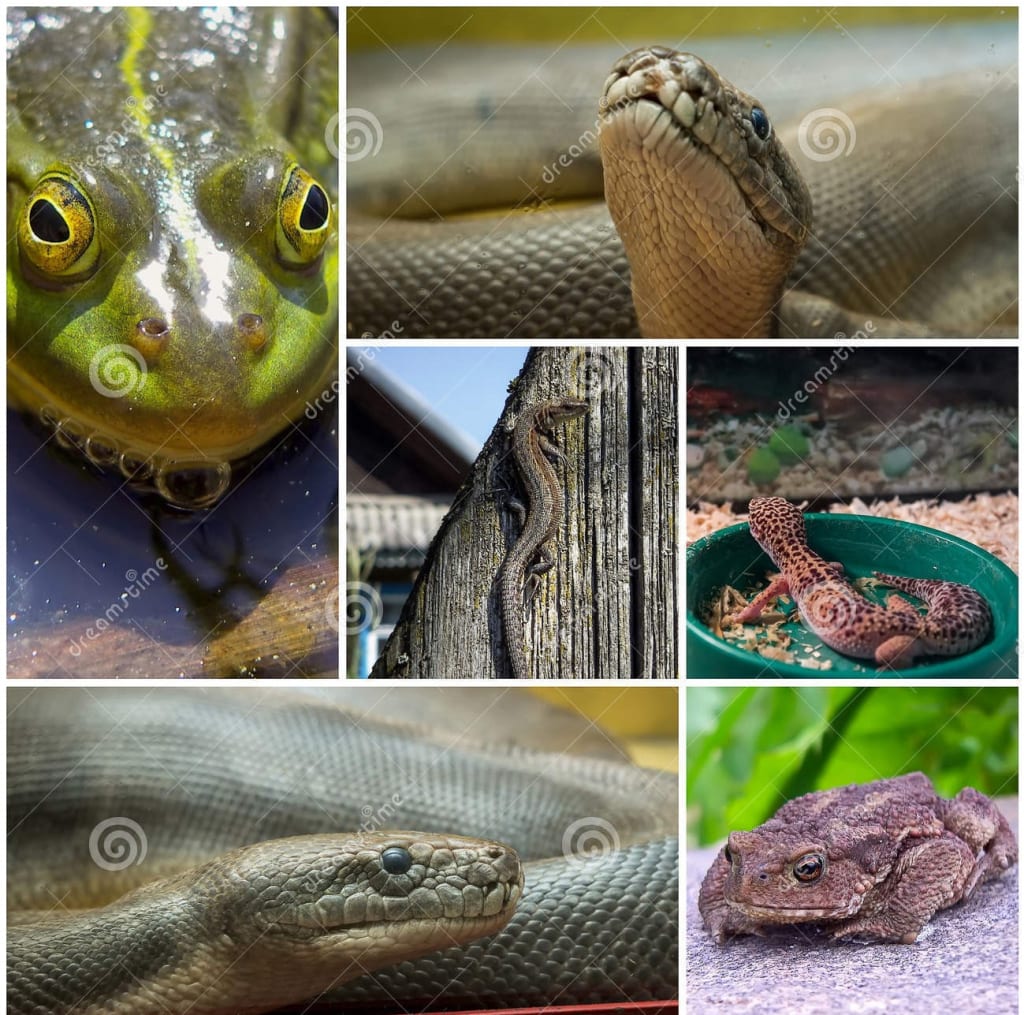The Fascinating World of Reptiles: Characteristics, Importance, and Threats
Exploring the World of Reptiles: Their Characteristics, Importance, and Threats to Their Survival

Reptiles are a diverse and fascinating group of animals that have been around for over 300 million years. They are characterized by their scaly skin, cold-blooded nature, and ability to lay eggs on land. Reptiles are found in almost every part of the world, from deserts to rainforests, and come in a wide variety of shapes and sizes. In this article, we will explore the unique characteristics of reptiles, their role in the ecosystem, and some interesting facts about these ancient creatures.
Types of Reptiles:
Reptiles can be divided into four main groups based on their physical and behavioral characteristics: snakes, lizards, turtles, and crocodilians.
Snakes:
Snakes are elongated, legless reptiles that are characterized by their flexible bodies and ability to swallow prey whole. They are found in almost every part of the world, from deserts to rainforests, and come in a variety of sizes and colors. Some of the most venomous snakes in the world include the king cobra, black mamba, and rattlesnake.
Lizards:
Lizards are a diverse group of reptiles that are characterized by their four legs and scaly skin. They can be found in almost every part of the world, from deserts to rainforests, and come in a wide variety of shapes and sizes. Some of the most well-known lizards include iguanas, geckos, and chameleons.
Turtles:
Turtles are a group of reptiles that are characterized by their protective shells and ability to retract their heads and legs into their shells for protection. They are found in both freshwater and saltwater environments, and come in a variety of shapes and sizes. Some of the most well-known turtles include sea turtles, box turtles, and snapping turtles.
Crocodilians:
Crocodilians are a group of large, predatory reptiles that are characterized by their powerful jaws and ability to live both on land and in water. They are found in tropical and subtropical regions around the world and include crocodiles, alligators, and caimans.
Physical Characteristics of Reptiles:
Reptiles have several unique physical characteristics that allow them to survive in a wide range of environments. One of their most distinctive features is their scaly skin, which provides protection from predators and helps to prevent water loss. Unlike mammals, reptiles are cold-blooded, which means that their body temperature is regulated by the environment around them.
Another key characteristic of reptiles is their ability to lay eggs on land. This adaptation allows them to reproduce in a wide range of environments, from deserts to rainforests. Unlike birds, reptile eggs do not have hard shells, but instead have a flexible membrane that allows gases to pass through.
Role of Reptiles in the Ecosystem:
Reptiles play an important role in the ecosystem as predators, prey, and seed dispersers. Many species of reptiles, such as snakes and crocodiles, are apex predators that help to control populations of other animals. Reptiles also serve as a source of food for many other animals, including birds, mammals, and other reptiles.
In addition to their role as predators and prey, reptiles also play an important role in seed dispersal. Some species of reptiles, such as iguanas, feed on fruits and berries and help to spread seeds throughout their environment. This process helps to promote the growth of new plants and maintain the diversity of the ecosystem.
Threats to Reptile Populations:
Like many other species, reptiles are threatened by habitat loss, climate change, and overexploitation. Human activities such as deforestation and urbanization have led to the destruction of natural habitats and its very dangerous. This is not good for nature
About the Creator
Enjoyed the story? Support the Creator.
Subscribe for free to receive all their stories in your feed. You could also pledge your support or give them a one-off tip, letting them know you appreciate their work.





Comments
There are no comments for this story
Be the first to respond and start the conversation.